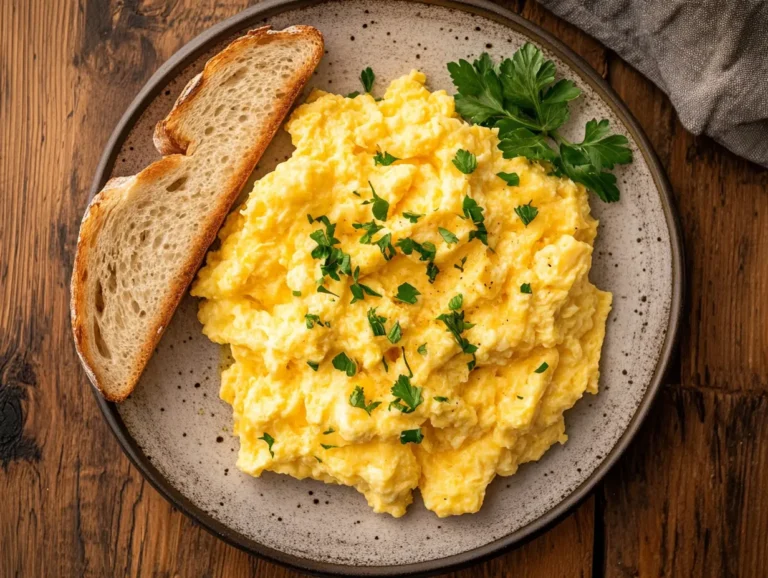Scrambled eggs are a breakfast classic—simple, quick, and endlessly customizable. Whether you prefer them fluffy, creamy, or soft and custardy, mastering the art of scrambled eggs is a skill worth learning. But making the best scrambled eggs isn’t just about cracking eggs into a pan and stirring. From selecting the right ingredients to cooking them with the perfect technique, every detail counts.
In this guide, we’ll walk you through everything you need to know about making perfect scrambled eggs—from choosing the best eggs to pro tips from top chefs. You’ll learn different cooking methods, creative variations, and even the nutritional benefits of this protein-packed dish. Let’s dive into the delicious world of scrambled eggs!
Introduction to Scrambled Eggs
What Are Scrambled Eggs?
Scrambled eggs are made by beating eggs and cooking them gently until they form soft, fluffy curds. Unlike fried or boiled eggs, scrambled eggs are stirred continuously, creating a creamy and smooth texture. This cooking method allows the eggs to remain moist and tender, making them a favorite breakfast option worldwide.
Why Scrambled Eggs Are a Breakfast Favorite
Scrambled eggs aren’t just delicious—they’re also one of the quickest and easiest breakfast options available. They’re packed with protein, healthy fats, and essential vitamins, making them a nutritious way to start your day. Plus, they’re incredibly versatile! You can keep them simple with just salt and butter or jazz them up with cheese, vegetables, or herbs.
Another reason scrambled eggs remain a staple in many diets is their adaptability. Whether you’re following a keto, paleo, or high-protein diet, they fit perfectly into your meal plan.
The Science Behind Perfect Scrambled Eggs
Ever wonder why some scrambled eggs turn out dry while others are creamy and silky? It all comes down to heat and technique. Cooking eggs at high heat causes the proteins to coagulate too quickly, leading to rubbery textures. The secret to soft, moist eggs is cooking them low and slow while stirring continuously.
Additionally, ingredients like butter, milk, or cream affect the texture. Butter adds richness, while milk can make them softer and lighter. Some chefs even swear by adding a splash of water to create extra fluffiness!
Choosing the Best Ingredients for Scrambled Eggs
Making perfect scrambled eggs starts with selecting the best ingredients. Using high-quality eggs, butter, and seasonings can make all the difference. Let’s break it down.
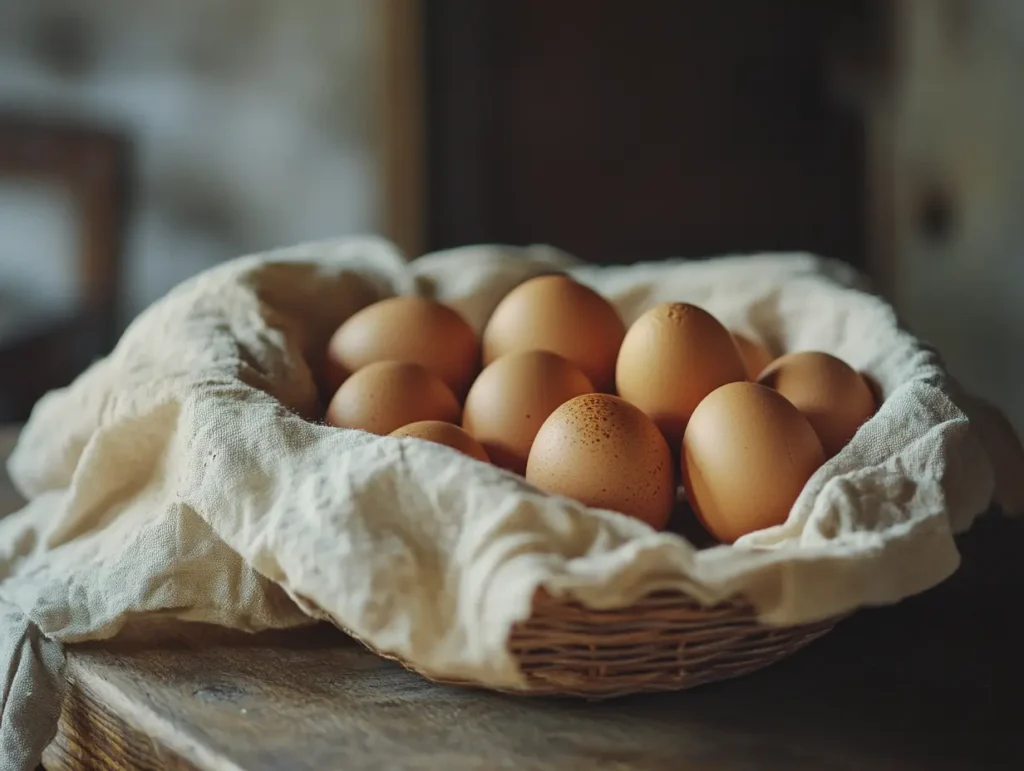
The Role of Eggs: What Type Works Best?
Not all eggs are the same! Choosing fresh, organic, or pasture-raised eggs enhances the flavor and texture of your scrambled eggs. Farm-fresh eggs often have richer yolks, resulting in a more vibrant color and a creamier consistency.
If you’re looking for healthier options, opt for omega-3-enriched eggs, which contain essential fatty acids that support brain function.
Butter vs. Oil: Which One to Use?
Butter is the gold standard for cooking scrambled eggs. It adds a rich, creamy taste and helps prevent the eggs from sticking to the pan. If you’re avoiding dairy, high-quality oils like olive oil or ghee are great alternatives.
Some chefs even use a combination of butter and oil to balance flavor and prevent the butter from burning too quickly.
Milk, Cream, or Water: Do You Need a Liquid?
Adding liquid to scrambled eggs is a hot debate. Here’s how each option affects the texture:
- Milk: Makes the eggs softer but can sometimes make them watery.
- Heavy Cream: Adds luxurious richness and makes the eggs extra creamy.
- Water: Helps create lighter, fluffier eggs without adding extra fat.
Want ultra-soft scrambled eggs? Try no liquid at all! Many chefs recommend simply whisking the eggs well for the best texture.
Seasoning Scrambled Eggs for Maximum Flavor
A pinch of salt and pepper is essential, but don’t stop there! Try these:
- Garlic powder or onion powder for depth.
- Paprika for a subtle smokiness.
- Fresh herbs like chives or parsley for a refreshing touch.
For an extra kick, add a dash of hot sauce or Dijon mustard before cooking!
How to Make Scrambled Eggs – Step-by-Step Guide
Now that you have the best ingredients, let’s cook some perfect scrambled eggs!
The Best Way to Whisk Eggs for a Smooth Texture
Start by cracking the eggs into a bowl and whisking them vigorously. The goal is to fully incorporate the whites and yolks, adding air for a fluffier texture. Use a fork or a whisk, but avoid over-beating.
For silkier eggs, strain the mixture through a fine-mesh sieve before cooking. This removes any chalazae (the white stringy bits) that can create an uneven texture.
Choosing the Right Pan and Heat Level
A non-stick pan or well-seasoned cast iron skillet is your best bet. These prevent sticking and allow for gentle, even cooking.
- Low and slow: Cooking on low heat ensures soft, creamy eggs.
- Medium heat: Works for firmer, drier scrambled eggs.
- High heat: Risky! Eggs cook too fast and become rubbery.
Always preheat your pan and add butter or oil before pouring in the eggs.
Cooking Techniques: Low and Slow vs. High Heat
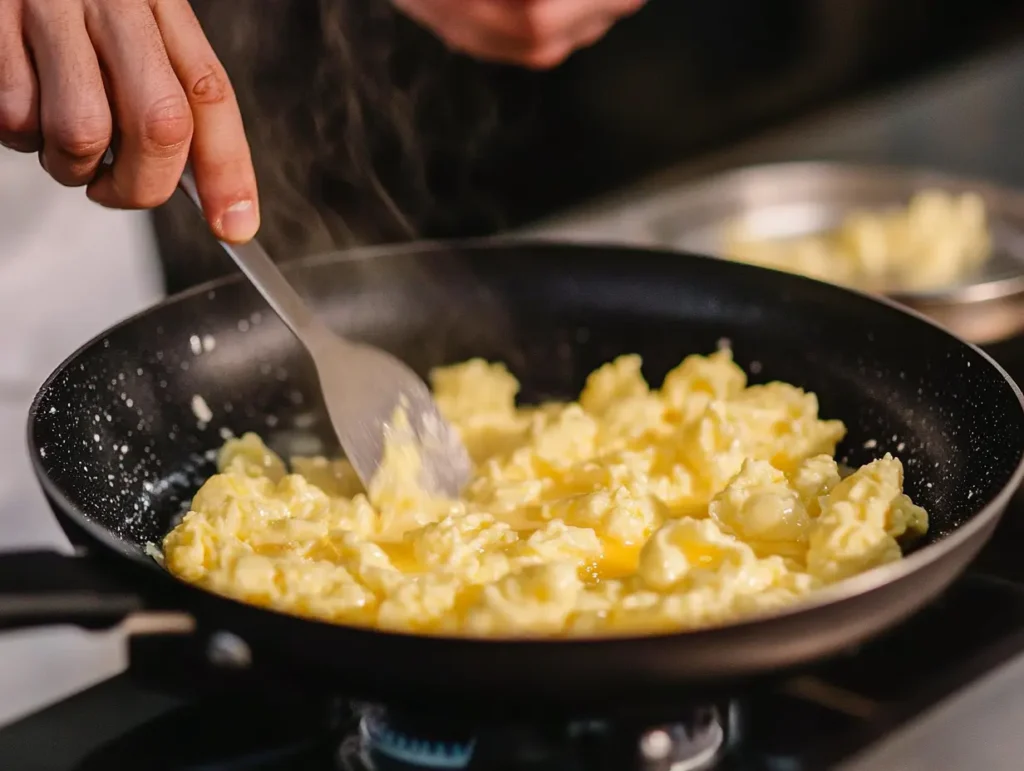
For the best scrambled eggs, cook them low and slow.
- Melt butter in the pan over low heat.
- Pour in the eggs and let them sit for a few seconds.
- Gently stir with a spatula, pushing the eggs from the edges to the center.
- Remove from heat slightly early—residual heat will finish cooking them.
If you prefer firm, drier scrambled eggs, use medium heat and stir more frequently.
When to Stir and When to Stop for the Perfect Texture
- Stir constantly for soft, custardy eggs.
- Stir occasionally for bigger, fluffy curds.
- Stop stirring when the eggs are 90% done—they’ll finish cooking from the heat in the pan.
Common Mistakes to Avoid
- Cooking on high heat = rubbery eggs.
- Overcooking = dry and crumbly texture.
- Not whisking enough = uneven texture.
- Salting too early = watery eggs (salt draws out moisture).
Variations and Unique Ways to Enjoy Scrambled Eggs
One of the best things about scrambled eggs is their versatility. Whether you love them soft and creamy or packed with bold flavors, there’s a recipe for everyone. Let’s explore some tasty variations!
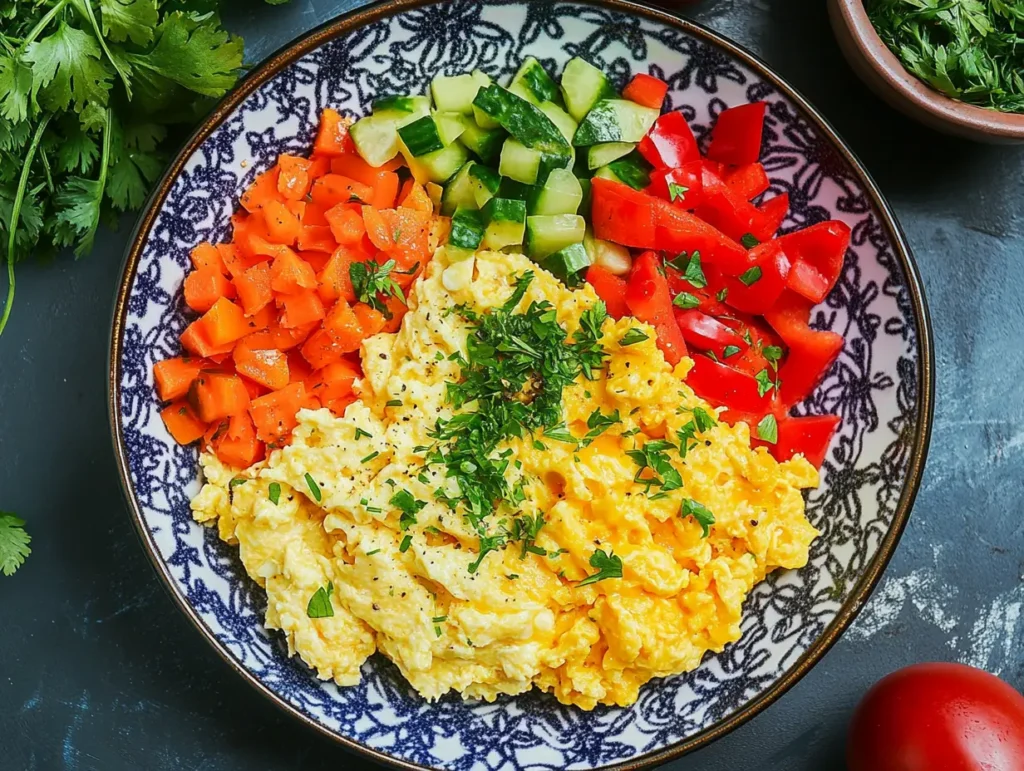
Classic Soft and Fluffy Scrambled Eggs
If you want light, airy, and pillowy scrambled eggs, stick to the low and slow method. Whisk your eggs well, cook them over low heat, and use butter for a smooth, rich taste.
Want extra fluffiness? Add a splash of water instead of milk—this creates steam, helping the eggs rise.
Creamy French-Style Scrambled Eggs
For ultra-soft, custardy scrambled eggs, try the French method:
- Use a double boiler or cook on very low heat.
- Stir constantly with a rubber spatula in slow, circular motions.
- Remove from heat occasionally to prevent overcooking.
- Finish with a pat of butter or crème fraîche for a silky texture.
These eggs are perfect for pairing with toast or smoked salmon.
Cheesy Scrambled Eggs – Best Cheese Options
Love cheesy scrambled eggs? Here are some of the best cheeses to mix in:
- Cheddar – Classic sharpness for bold flavor.
- Goat cheese – Creamy and slightly tangy.
- Feta – A salty, Mediterranean twist.
- Parmesan – A nutty, umami-packed option.
For the best results, add cheese near the end of cooking to keep it melty and creamy.
Healthy Scrambled Eggs with Vegetables
Want a more nutritious twist? Add some veggies! Some great options include:
- Spinach – Adds iron and a vibrant color.
- Bell peppers – A touch of sweetness and crunch.
- Mushrooms – A hearty, earthy flavor.
- Avocado – Creamy, healthy fats to keep you full.
Sauté your veggies before adding the eggs to prevent excess moisture.
Spicy Scrambled Eggs with a Kick
For a little heat, spice up your scrambled eggs with:
- Sriracha or hot sauce
- Red pepper flakes
- Diced jalapeños
- Smoky chipotle powder
These pair well with tortillas, making them great for breakfast tacos!
Pro Tips from Chefs for the Best Scrambled Eggs
Top chefs have mastered the art of scrambled eggs, and their techniques can help take yours to the next level.
Gordon Ramsay’s Secret to Creamy Scrambled Eggs
Gordon Ramsay swears by constantly stirring the eggs and using a heat-on, heat-off method. Here’s how he does it:
- Crack the eggs into a cold pan with butter—no preheating!
- Stir with a rubber spatula constantly over medium-low heat.
- Remove from heat every 30 seconds to prevent overcooking.
- Finish with salt, pepper, and crème fraîche for ultimate creaminess.
Jamie Oliver’s Method for Perfect Eggs
Jamie Oliver likes to whisk his eggs with a fork for extra air, making them lighter. He also recommends:
- Using low heat for slow, controlled cooking.
- Adding a touch of milk for softness.
- Seasoning at the end to keep eggs fluffy.
How Culinary Schools Teach Scrambled Eggs
In professional kitchens, scrambled eggs are often prepared using high-quality butter, minimal seasoning, and controlled heat. Culinary schools teach:
- Whisking eggs well to break up the whites.
- Using a nonstick pan to prevent sticking.
- Pulling eggs off the heat early to prevent overcooking.
Reddit’s Best Scrambled Egg Hacks
Home cooks on Reddit have shared some surprising scrambled egg secrets:
- Adding a pinch of baking powder makes eggs extra fluffy.
- A dash of soy sauce instead of salt adds umami richness.
- Using a frozen stick of butter and grating it into the eggs ensures even cooking.
Nutritional Information and Health Benefits of Scrambled Eggs
Scrambled eggs aren’t just delicious—they’re also packed with essential nutrients that fuel your body. Whether you’re looking for a high-protein breakfast or a low-carb meal, eggs are a great choice.
How Many Calories Are in Scrambled Eggs?
The calorie count of scrambled eggs depends on the ingredients used. Here’s a quick breakdown per serving (two large eggs):
- Plain scrambled eggs (with no butter or milk): ~140 calories
- Scrambled eggs with butter: ~200 calories
- Scrambled eggs with milk: ~180 calories
- Cheesy scrambled eggs: ~250+ calories
If you’re watching calories, use a non-stick pan with minimal butter or oil.
Are Scrambled Eggs Healthy?
Absolutely! Eggs are rich in protein, vitamins, and minerals, making them a nutrient-dense food. They contain:
- High-quality protein to support muscle growth
- Choline for brain function and memory
- B vitamins for energy production
- Healthy fats for sustained fullness
Protein and Nutrients in Scrambled Eggs
Each large egg contains 6-7 grams of protein, making scrambled eggs an excellent choice for muscle recovery and overall health. Plus, they provide:
- Iron for oxygen transport in the blood
- Vitamin D for bone health
- Selenium for immune support
For a healthier twist, pair scrambled eggs with vegetables and whole grains for a balanced meal.
Frequently Asked Questions
Many people have questions about scrambled eggs, from cooking tips to nutritional facts. Let’s answer some of the most common ones!
How to Properly Make Scrambled Eggs?
The secret to perfect scrambled eggs lies in low heat and gentle stirring. Always whisk the eggs thoroughly before cooking, and avoid high heat to keep them soft and fluffy. Use butter or oil for better texture, and season at the end for the best taste.
How Many Calories Are in Scrambled Eggs?
A serving of two scrambled eggs contains roughly 140-200 calories, depending on the cooking method and added ingredients like butter, milk, or cheese.
Why Are My Scrambled Eggs Rubbery?
Rubbery scrambled eggs usually result from overcooking or high heat. To fix this:
– Use low heat and cook the eggs slowly.
– Remove the eggs from heat early—they’ll finish cooking from residual warmth.
– Avoid over-stirring to maintain a creamy texture.
Can You Make Scrambled Eggs Without Butter or Milk?
Yes! You can make scrambled eggs without butter or milk by using:
– Olive oil for a light, healthy alternative
– Ghee for a rich, nutty flavor
– No added fat by using a non-stick pan
For extra fluffiness, whisk the eggs with water instead of milk!
Conclusion – Mastering the Art of Scrambled Eggs
By now, you’ve learned everything there is to know about scrambled eggs—from choosing the best ingredients to mastering different cooking techniques. Whether you prefer them soft and creamy, fluffy and light, or loaded with cheese and veggies, the key is low heat, patience, and the right mix of ingredients.
To recap, here are some essential takeaways:
- Use fresh, high-quality eggs for the best flavor.
- Cook over low heat and stir gently for soft, moist scrambled eggs.
- Avoid overcooking, as eggs continue to cook from residual heat.
- Experiment with seasonings, cheeses, and veggies to customize your dish.
Scrambled eggs are more than just a breakfast staple—they’re a versatile, protein-packed meal that can be enjoyed any time of the day. Whether you’re making classic fluffy eggs, creamy French-style eggs, or spicy scrambled eggs, the possibilities are endless!
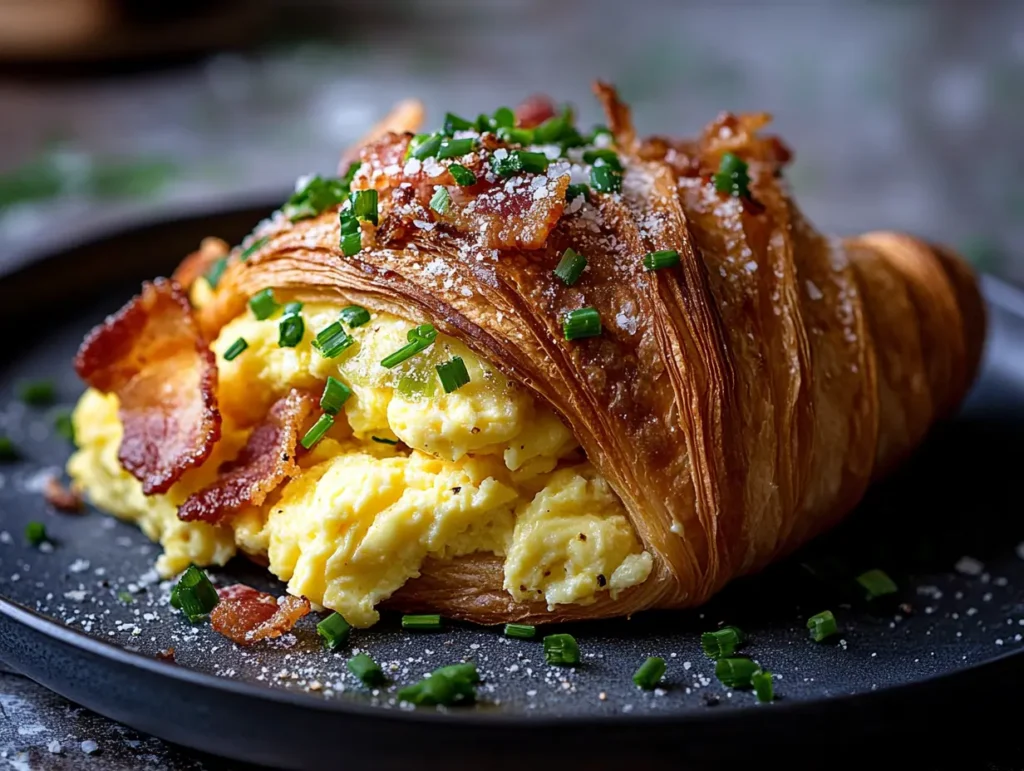
If you want to take your breakfast to the next level, pair scrambled eggs with toast, fresh fruit, or even pancakes. Check out this Easy Pancake Oreo Recipe for a sweet and savory combo!
Print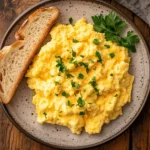
Fluffy Scrambled Eggs
- Total Time: 10 minutes
- Yield: 1/2 1x
Description
These fluffy scrambled eggs are quick, easy, and packed with flavor. Whether served on toast or as a side, they make the perfect breakfast or brunch dish.
Ingredients
- 4 large eggs
- 2 tbsp whole milk (or heavy cream for creamier texture)
- 1 tbsp butter
- Salt, to taste
- Black pepper, to taste
- Optional: Chopped chives, shredded cheese, or hot sauce
Instructions
- In a bowl, whisk the eggs with milk, salt, and black pepper until well combined.
- Heat a non-stick skillet over medium-low heat and melt the butter.
- Pour the egg mixture into the pan and let it sit for a few seconds without stirring.
- Using a spatula, gently push the eggs from the edges toward the center, creating soft folds.
- Continue cooking, stirring occasionally, until the eggs are just set but still slightly glossy.
- Remove from heat immediately to avoid overcooking.
- Serve warm, garnished with chives, cheese, or your favorite toppings
Notes
- For creamier eggs, use heavy cream instead of milk.
- Cook on low heat for the best texture.
- Avoid over-stirring to keep the eggs fluffy.
- Pair with toast, avocado, or smoked salmon for a complete meal.
- Prep Time: 5 minutes
- Cook Time: 5 minutes
- Category: Breakfast
- Cuisine: American
Nutrition
- Calories: 220 kcal
- Sugar: 1g
- Fat: 18g
- Saturated Fat: 7g
- Unsaturated Fat: 9g
- Carbohydrates: 2g
- Protein: 14g
- Cholesterol: 390mg
Keywords: fluffy scrambled eggs, easy scrambled eggs, breakfast eggs, soft scrambled eggs

